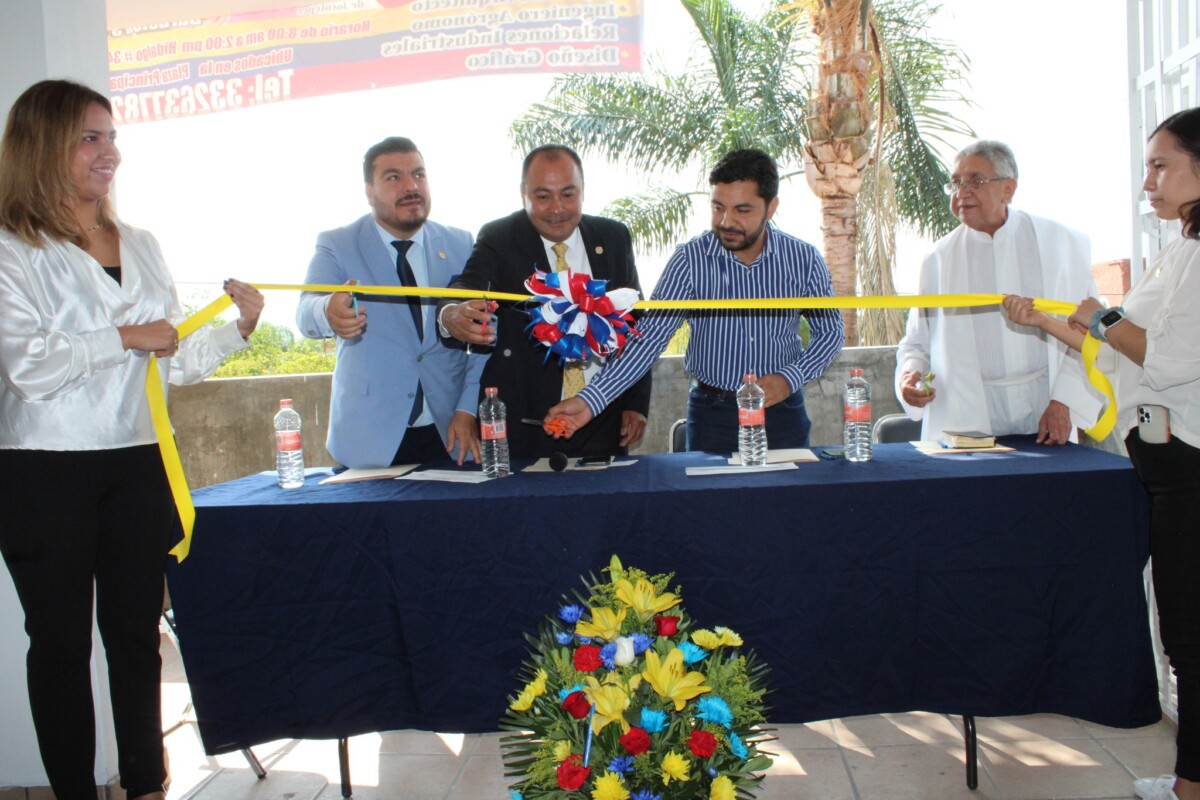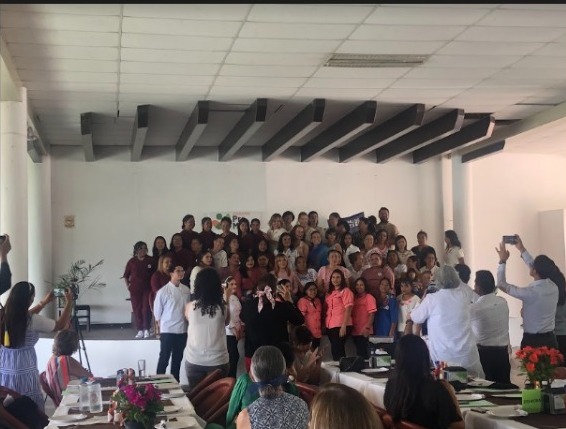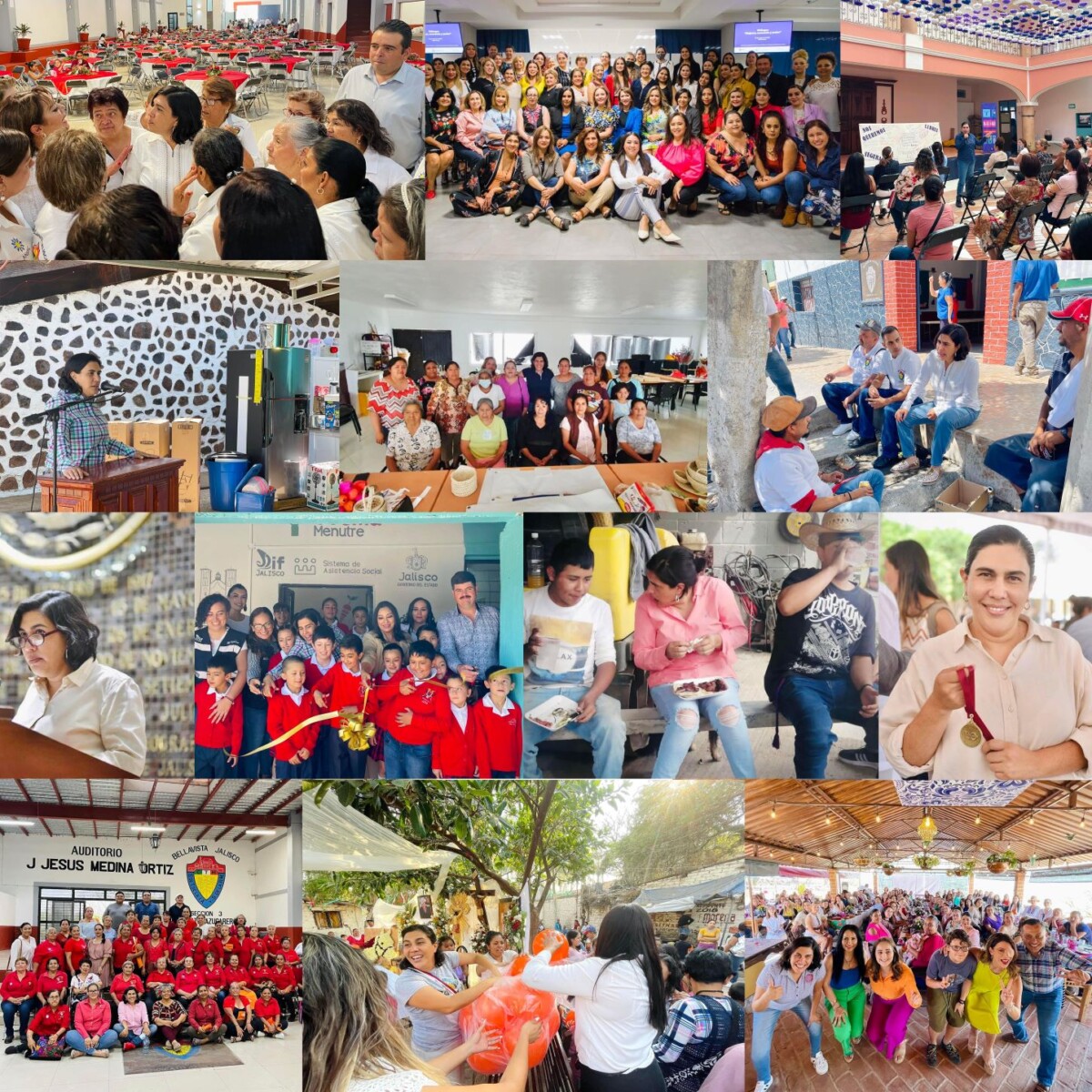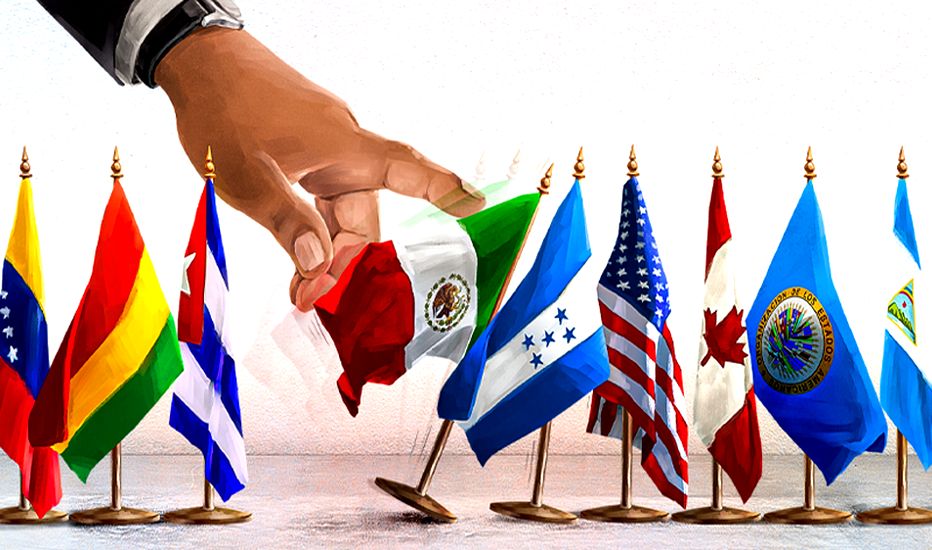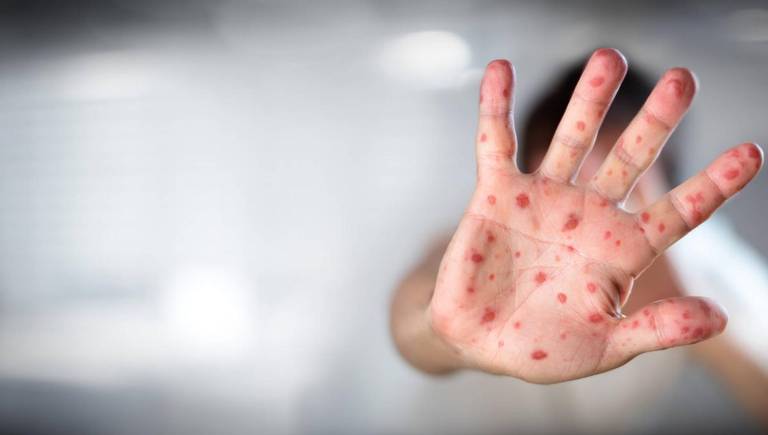noticias
Hombre asesina a su suegro y sustrae a niña de cuatro años en Chapala; ya fue detenido
El presunto homicida fue identificado como Miguel N. Foto: Gobierno de Chapala.
Redacción.- Un sujeto fue detenido en Chapala por presuntamente asesinar a su suegro con un arma blanca, así como por haber sustraído a su hija de cuatro años tras el ataque.
De acuerdo con un boletín emitido por el Gobierno Municipal, fue pasada la medianoche del sábado 18 de junio cuando Miguel N. agredió con un cuchillo al padre de su pareja sentimental.
A las 00:30 horas, elementos de la Dirección de Seguridad Pública Municipal de Chapala, acudieron a la calle Ciruelos, donde se reportó una riña en un domicilio particular; al arribo una mujer solicitó ayuda para un hombre herido que refirió como su marido y había sido agredido por su yerno.

La niña de 4 años de edad fue recuperada y entregada sana y salva a sus familiares. Foto: Gobierno de Chapala.
A la llegada de servicios médicos para valoración del mismo se reportó que el hombre ya no contaba con signos vitales.
La mujer también informó que momentos antes de la riña su yerno, Miguel N, golpeó a su hija (pareja del agresor), por lo que acudieron a auxiliarla; el hombre corrió a la cocina y tomó un cuchillo con el que hiere en tres ocasiones a su suegro, para después darse a la huida llevándose a una menor, hija del mismo y de la mujer agredida.
Derivado de lo anterior la Dirección de Seguridad Pública Municipal realizó, en coordinación con la Policía Investigadora, un operativo de búsqueda teniendo como resultado que a las 11:30 horas de la mañana se detuvo en la zona conocida como Jagüey en la colonia el Tecolote, al presunto homicida y se recuperó a la menor de 4 años.
El presunto homicida fue puesto a disposición de la autoridad competente, así también se realiza la entrega de la menor sana y salva a los familiares.
Contradicen testigos al Ayuntamiento de Chapala por liberación de presunto acosador ‘por falta de denuncias’
Momento de la captura de Leo “N” el pasado martes 31 de mayo. Foto: Cortesía.
Sofía Medeles.- Pese a que Comunicación Social del Gobierno de Chapala informó que el presunto acosador detenido, identificado como Leo “N”, habría sido liberado por haber cumplido con las horas de la sanción administrativa y por no haber denuncias en su contra, testigos y denunciantes aseguraron que hubo al menos seis interpuestas en el Ministerio Público (MP).
La declaración por parte del Ayuntamiento fue brindada el mismo día de su liberación, es decir, el pasado jueves 2 de junio, motivo por el que los denunciantes compartieron a Laguna sus testimonios en contra del señalado.
Dos personas, quienes que optaron por el anonimato por temor a represalias, aseguraron contar con un folio de carpeta de denuncia -a la cual este medio tuvo acceso-, además, aseguraron que mantuvieron contacto con al menos otras cuatro personas que denunciaron entre el día de la detención de Leo “N”, martes 31 de mayo, y el día siguiente, es decir, miércoles 1 de junio.
Aunque no mencionaron una causa o delito por el que denunciaron, comentaron que los testimonios de los denunciantes fueron similares. Los testigos creen que el delito podría ser acoso, o toma de fotografías de menores de edad sin su consentimiento.
“Nos encontramos con muchos conocidos, hasta les ayudamos a reunir los papeles que necesitaban. En los casos con menores de edad, a los niños los pasaron con psicólogo, y después de eso, nos citaron hasta septiembre. Solo en un caso le citaron en Poncitlán, le volvieron a pedir la declaración, y le dijeron que le hablarían cuando hubiera actualizaciones”, comentó una entrevistada.
Aunque los oficiales de policía municipal, y demás autoridades exhortaron a la población afectada a denunciar, al final, se emitió la postura de que no había ninguna denuncia, ante el Ministerio Público. Esto, junto a la liberación del señalado, desmoralizó a las personas que iniciaron con procesos en el Ministerio Público, ya que no le ven caso a seguir con los trámites si el sujeto se encuentra en libertad, y según rumores, lejos de Ajijic.
Además, compartieron que, en el transcurso de sus denuncias en el MP del municipio, el personal de la dependencia fue cortante, carente de empatía, y falto de apoyo en la explicación del papeleo a quienes acudieron a denunciar.
Una estudiante de leyes, quien prefirió omitir su nombre, señaló sobre el actuar de las autoridades en la liberación del individuo, que podría deberse a varias razones que hacen que el caso no sea tan grave, como la posible condición mental de Leo “N”, o que el delito de acoso no es tan severo como para tener a alguien en situación de cárcel mientras se hacen las averiguaciones correspondientes, y que en estos casos, es probable que otorgue una medida cautelar, como lo es ir a firmar cada mes a las oficinas del MP.
Finalmente, las personas afectadas dejaron un mensaje a las autoridades estatales, preguntando qué tiene que pasar o qué esperan para que intercedan.
“Esperan que secuestren o abusen de alguien”, manifestó uno de los testigos. A raíz de esto, también mencionaron que por eso ocurren tantos casos de “justicia por mano propia», al ser ignorados y que no haya figura que preserve su seguridad.
With URIT, university classes come to Jocotepec
Inaugural ribbon cutting. Photo: Government of Jocotepec.
Editor.- Jocotepec now has a university. The Regional University of Tequila (URIT) opened a campus in Jocotepec June 4, starting with 11 degree programs.
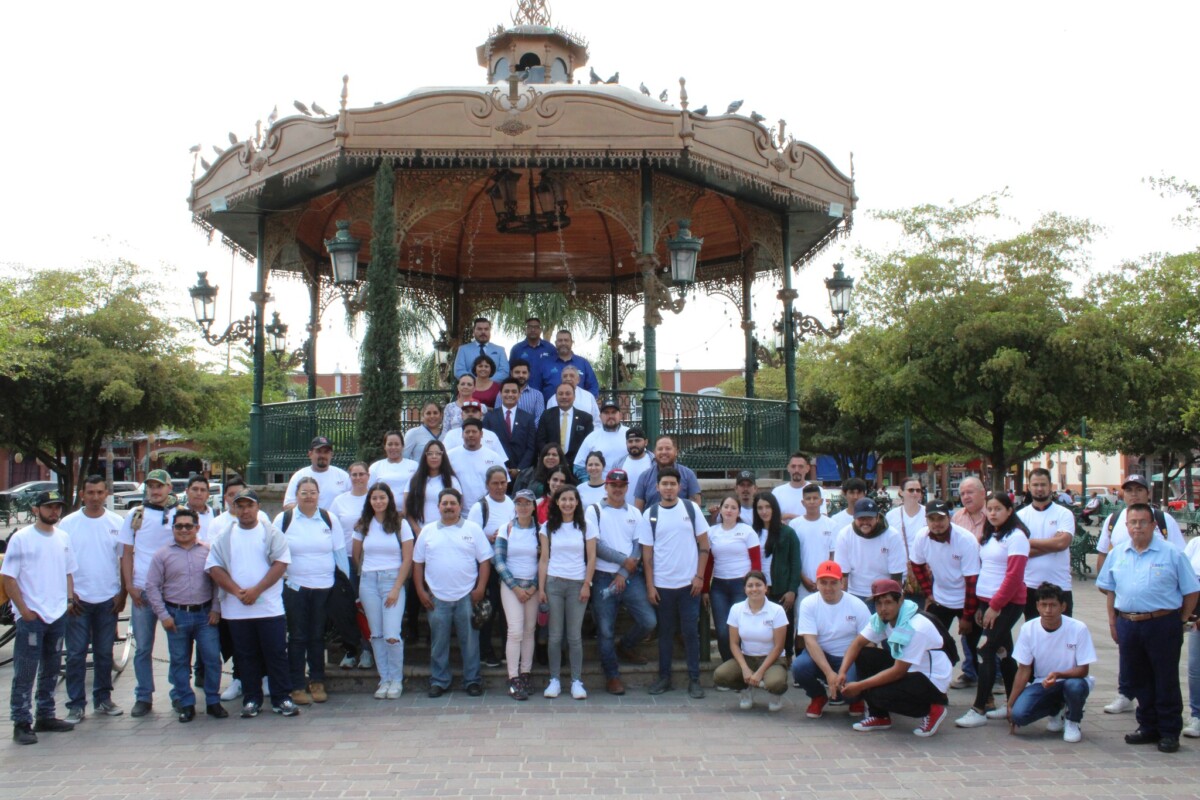
URIT Jocotepec, already has students. Photo: Government of Jocotepec.
Present at the opening were Juan Diego Calderón Rodríguez, general rector of the university council, Moisés Rodríguez Huerta, vice rector, Carlos Alberto Zúñiga Chacón, municipal trustee, and Father Jesús Quiroz Romo, who blessed the facilities, academic staff and students.
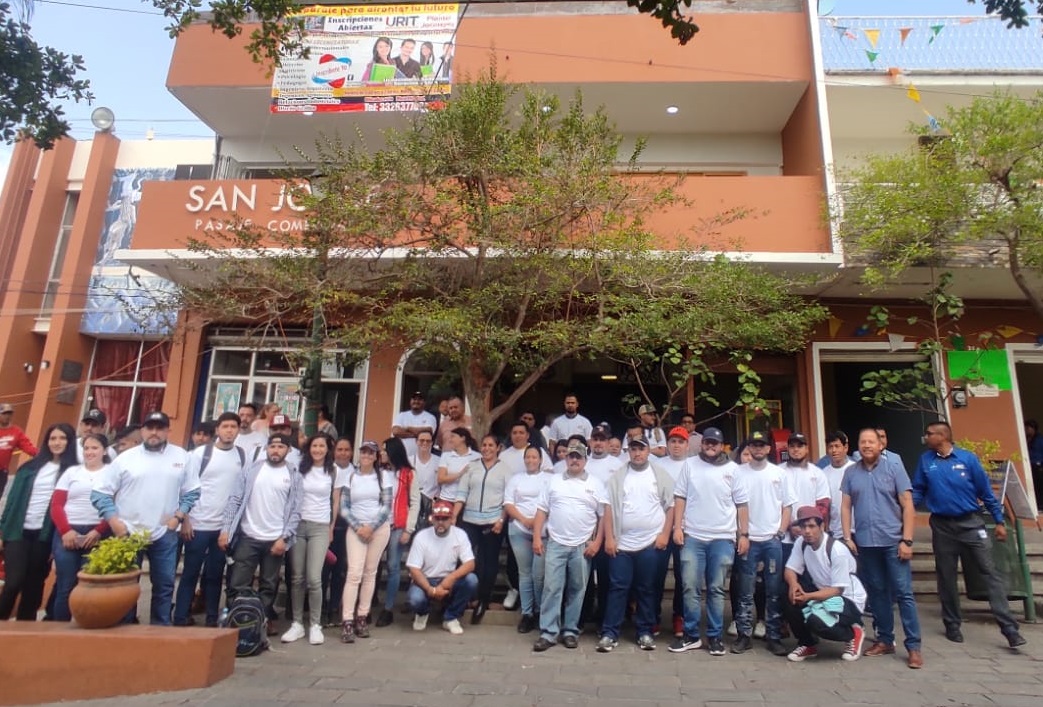
The facilities are located next to the access to the San Jorge passage in the Jocotepec plaza. Photo: Government of Jocotepec.
URIT Jocotepec offers studies in International Business, Administration, Accounting, Law, Nutrition, Psychology, Pedagogy, Architectural Engineering, Agricultural Engineering, Industrial Relations and Graphic Design.
«Bringing the campus to young people allows them to receive the same education right here. We are continuing to break ground in Lake Chapala municipalities in order to bring affordable and convenient education,» said Rector Juan Diego Calderón Rodríguez during an interview.
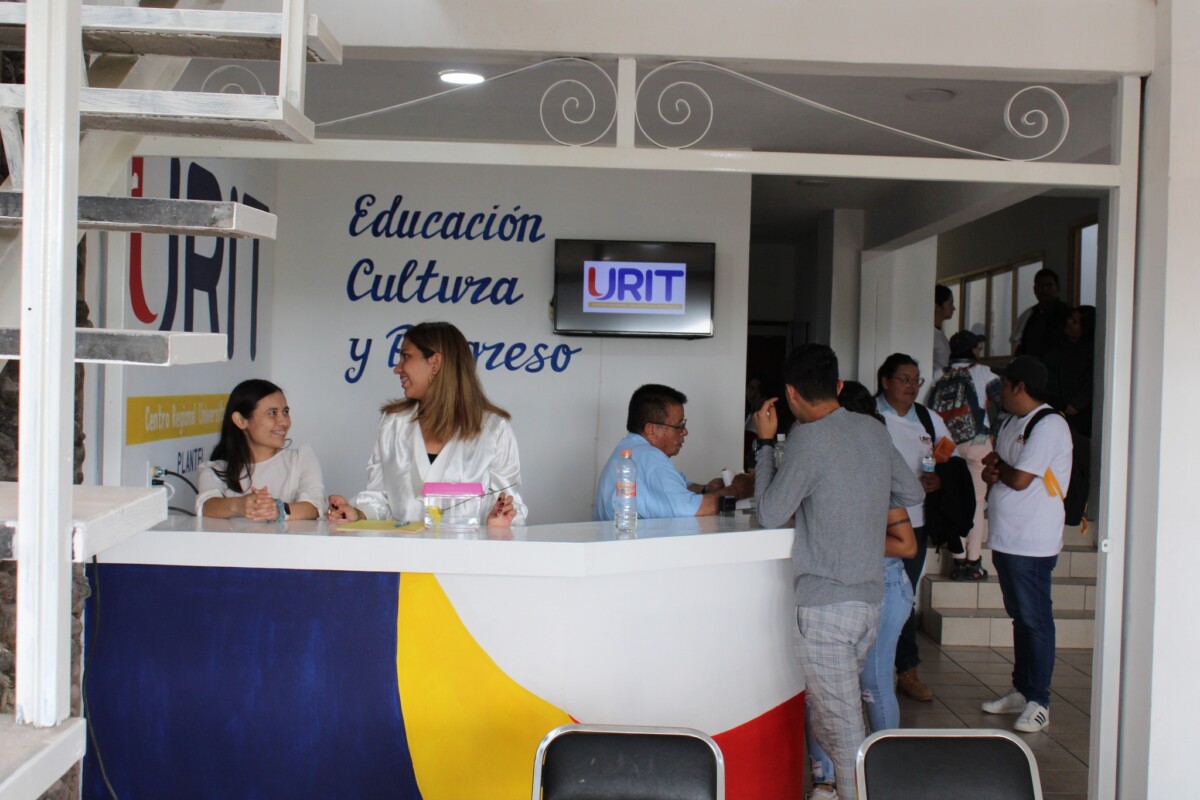
Part of the school facilities. Photo: Government of Jocotepec.
The campus plans to offer bachelor’s, postgraduate, specialties and master’s degrees, said Vice Rector Moisés Rodríguez Huerta, adding that the wide educational offerings help the community, especially the Agronomist Engineer, in view of the red fruit fields for export in the municipality.
For more information, please call 332-637-7821 or go to the campus, located in the Jocotepec plaza.
Translated by Paul Weeks
The third generation of Pro Mexico women entrepreneurs graduate in San Juan Cosalá
More than 45 women between the ages of 20 and 65 completed their courses at the Pro Mexico association. Photo: Alma Serrano.
Editor.- Mujeres Pro México celebrated the culmination of the third generation of the Second Chance program on the afternoon of May 8 in San Juan Cosalá.
The event was held at a restaurant on the edge of Lake Chapala, near the restaurant row area of Piedra Barrenada, where the 45 students received recognition for their participation, after an honorary act.
The trades studied were Handmade Sewing, Natural Cosmetics, Caregivers for the Elderly and Event Organization, which lasted about a year. However, the Pro Mexico team offers continuous basic training for women in any of its workshops.
The event was attended by more than 100 people, including guests, family members, students, mentors and members of the Pro Mexico team. The third generation of the workshops was finally able to complete the course, as the first two lasted between six and ten months due to the Covid-19 pandemic.
During the graduation, the mentors and women on the podium recognized and congratulated the graduates for the significance that the Second Chance program has achieved in their lives.
At the event it was pointed out that «there are 45 women giving themselves a second chance to learn»; and «you have put yourselves in front of everyone, deciding and have left aside the thought of ‘I can’t’; we don’t wait for things to happen, thinking if God wants it, of course he does», were some of the phrases expressed.
Pro Mexico is the only association in Ribera de Chapala focused on the development of women by offering them personal and emotional support.
«We are the number one empowerment center in San Juan Cosalá, with 45 hardworking and tireless women,» said Rosa Arévalo, a representative of the association.
The event ended with a runway show of blanket clothing created, intervened and presented by Pro Mexico women, which highlighted the value of each and every one of its women.
Translated by Patrick O’Heffernan
Residents of Barrio Santa María request street maintenance, public spaces, and medical services
Neighbors of the Santa María neighborhood presenting their complaints and petitions to the municipal president of Chapala.
Jazmín Stengel (Chapala).- Residents of Chapala’s Santa María neighborhood told Cshapala President Aguirre during a weekly “Session with the Mayr’ that they need maintenance on streets that flood when it rains, public spaces, and medical services,
The heavy floods that occur on Santa María street bring mud, stones, materials and even dead animals, according to the testimonies of the people who attended the supervision tour, with more than eight neighbors complaining. Municipal authorities committed to address the issue.
Another of the requests made to Aguirre Curiel was the installation of public recreational places for young people and adults, since there are few in the area.
They also asked the municipality to provide local or mobile medical services, since the neighborhood is far from community health centers.
Translated by Kerry Watson
Chronicles of the Ribera
The image of San Antonio de Padua that a mysterious woman left more than a hundred years ago in the hands of Feliciana Carrillo. Photo: María del Refugio Reynozo.
By María del Refugio Reynozo Medina
They say that Saint Anthony of Padua helps you find what was lost and remember what was forgotten. Benita Lomelí Hernández grew up wrapped in the fervor of a 15-centimeter tall sharp-faced figure, which has belonged to her family since before she was born.
The origin of this small sculpture dates back more than a hundred years. In the town of El Sauz in the municipality of Jocotepec, Benita’s grandmother, Doña Feliciana Carrillo was in the courtyard taking the afternoon’s last sun, with a view of the road that crossed the town. In the distance, she could see the silhouette of a woman approaching.
The woman, after greeting Doña Feliciana, asked her if she would hold the package she was carrying. The woman told Doña Feliciana that she was on her way to San Luis Soyatlán, but that she would soon return for the package. Doña Feliciana could not see the woman’s face clearly as she wore a shawl covering her head and walked slowly. When Doña Feliciana’s daughter came out, she told her daughter what had happened. No one else could see the mysterious lady.
The small package fit in both hands and was wrapped in worn, time-stained scraps of cloth. “Take it up to the roof,» she asked her daughter, with a tone of respect for other people’s things. A few months passed, the woman did not return, and everyone forgot about the package.
Doña Feliciana’s house was the meeting point for personalities who sporadically passed through the village. It was a very remarkable house because it no longer had a dirt floor inside: it had cobblestones, tiles and a fireplace. On one occasion when a priest arrived to do evangelization work, Doña Feliciana remembered the package that the woman had given her to keep and that she had never dared to open. With the priest as a witness, they took the package down from the attic.
The parish priest was removing the layers of battered cloth one by one until a fine figure was revealed. “It is St. Anthony of Padua,» he told them. “What was lost and forgotten will return when they implore him to do so.”
Doña Feliciana was impressed, for her the image was alien. “Take care of it, it is yours,» the father told her. He also asked Doña Feliciana to celebrate it every June 13. “That woman will not come back,» he told them with certainty.
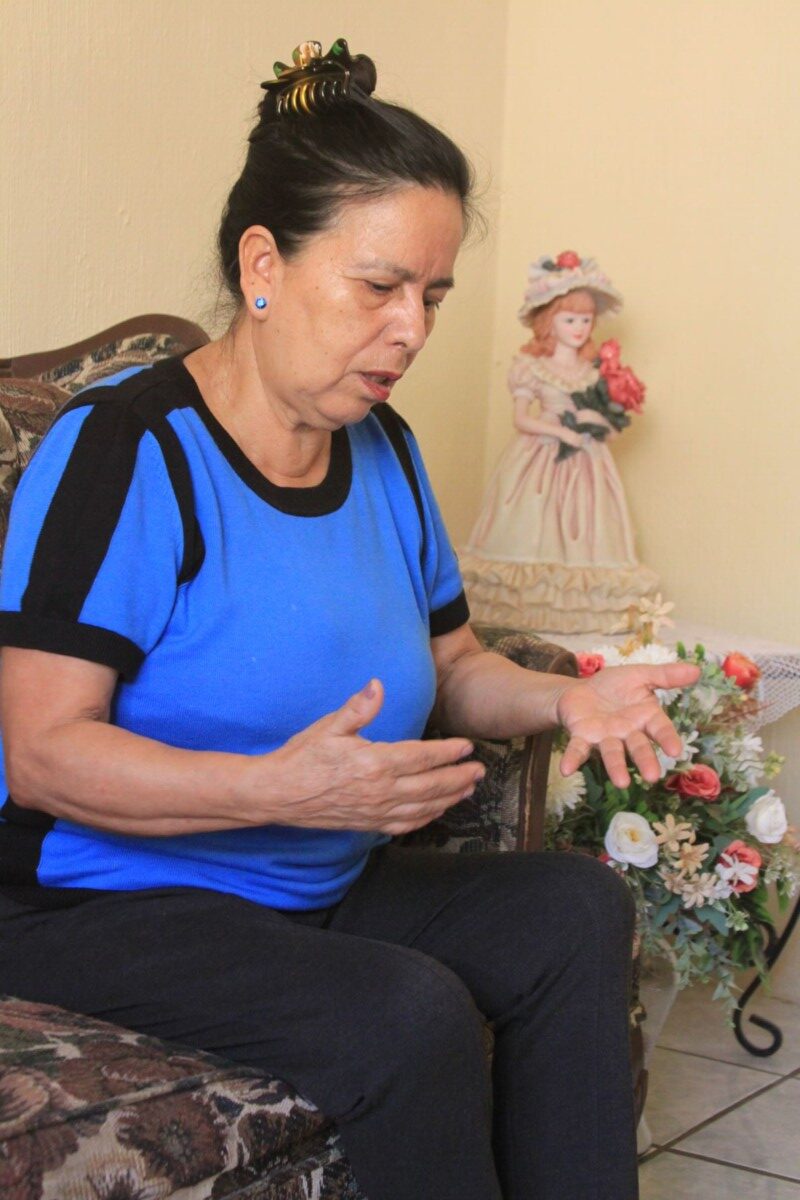
Benita Lomelí Hernández talks about how the image of San Antonio de Padua, now venerated by her entire family, came to her. Photo: María del Refugio Reynozo.
Some said that the person who gave the precious image to Doña Feliciana was not from this world. She never appeared again, and no one else besides Feliciana could ever see her. Her presence was a mirage, but the fine figure of St. Anthony of Padua was real. From the moment he was discovered among the cloth rags, Benita’s grandmother entrusted the image to her youngest son, who was then three years old.
When that three-year-old boy came of age and got married, his brothers came to give him the oxen, goats and corn cribs after the three days of the wedding. “You will know if you take care of your capital,» they said. Along with this, they also gave Benita’s father the sculpture of San Antonio, as was his mother’s wish.
That is how Benita grew up, with the veneration of the saint professed by her parents who guarded the image that came from who knows where. That faith spread to the neighbors who began to visit Benita’s house to pray for their lost causes and then to carry candles in gratitude for all that was found.
Benita remembers a prayer said by her mother:
Antonio, Antonio, in Padua you were born, in Padua you were raised, you went to school, your prayer book was thrown away, your father found it for you. Antonio, Antonio, the lost is found and the past is remembered. Antonio, Antonio forever. AMEN.
The image of Saint Anthony that Benita now keeps is made of a single piece of wood, carved by unknown hands. The statue’s facial features are fine, at the waist of his Franciscan habit he wears a tight cord, and in his arms he carries a child of barely four centimeters in length.
This particular little boy was bought by Benita’s mother, who has lost count of the number of children replaced because the original was stolen. “They stole my child again,» she would say to the sales clerks at the religious articles store when she went to replace the small statue. “They think he will bring them a boyfriend, but St. Anthony does not give boyfriends,» she said. “[For] good husbands one must ask St. Joseph.”
Every June 13, in Benita’s house, candles are lit and fresh flowers are placed in honor of the little image full of history that brings back what was lost and reminds us of what was forgotten. And Benita along with those of the faithful neighbors invoke the Saint of Padua:
Antonio, Antonio, Antonio…
Translated by MaryAnne Marble
With 39 initiatives and multiple co-sponsored bills, Congresswoman ‘Lolis’ celebrates one year in office
A little more than a year after being elected by the citizens of the 17th district, María Dolores López Jara, who goes by Lolis, has promoted 39 initiatives, several focused on equality and human rights, in addition to multiple co- sponsorships in social matters.
“I feel happy because we are celebrating our anniversary!” said the congresswoman on social networks. “One year after the election, I am still grateful to all the people who gave me their trust.”
The Jocotepec native and Deputy in the Congress of Jalisco has accomplished a lot so far in projects and negotiations. About 1,200 people have benefited through various social programs, she has had 20 talks with women throughout the district and she has made 156 visits to municipalities,
Lolis also recognized the efforts of her family and friends, as well as her work team. She has committed herself to the citizens to continue moving forward, to be at the service of the people, and to be always working.
Translated by Mike Rogers
University of Guadalajara resumes the use of masks due to an increase in coronavirus infections
Administrative Building of the University of Guadalajara. Photo: UdeG.
Editor. – Following the recommendations of the Health Situation Room by Covid-19 of the University of Guadalajara (UdeG) and in view of the increase of cases that have been registered in recent weeks in Jalisco, as of this Wednesday, June 8, 2022, the use of masks in university facilities is mandatory.
«This preventive measure seeks to safeguard the health of university students and their families. Therefore, we invite our community to retake this measure which has proven its effectiveness in preventing contagions,» the university announced in a statement.
The publication ended with the recommendation: «In case of presenting symptoms of respiratory disease or having been in direct contact with a positive case of Covid-19, the corresponding diagnostic test should be performed and reported.”
Translated by Sydney Metrick
Opinion: From North to South
With no clear results since the first Summit of the Americas, the presidents of the American nations are meeting in the United States for its next round, minus Cuba, Venezuela and Nicaragua and Mexico. Photo: Courtesy.
By: Abigail A. Correa Cisneros
The various issues discussed at the Summit of the Americas since its beginning in 1990, remain unresolved in the region. Currently pending are the two years of the Covid-19 pandemic, the climate crisis we are going through, and migration.
This meeting lacks, among other things, inclusion, after leaving out Nicaragua, Cuba and Venezuela and for which the President of Mexico said he will not attend. However, his representative will be the Foreign Minister, Marcelo Ebrard addressing the issue of Cuba and the blockade.
Every three years political leaders from all over the continent meet to discuss and define actions to face the problems and challenges shared by the region. It seems that little has been achieved. The region continues to experience problems of marginalization, migration, violence and economic problems.
In this meeting, the focus is on climate change. «Building a sustainable, resilient and equitable future» is the theme of the summit being held in the United States from June 6 to 10. Other topics to be discussed include democracy, human rights, justice, security, trade, disaster management, sustainable development, education, health, gender equality, connectivity, among others.
Since the summit has been taking place, the pending issues are becoming more and more important in the Americas. Nayar López Castellanos, the coordinator of the Center for Latin American Studies of the Faculty of Political and Social Sciences (FCPyS), considers that: «it has traditionally been a space created by the United States to generate a favorable environment for its interests and its hegemonic condition that has prevailed throughout history».
The researcher and academic secretary of the Center for Research on North America (CISAN), Juan Carlos Barrón Pastor, says that the idea of creating a summit to promote a sustainable, resilient and equitable future creates a set of ambiguities because it is not clear what it refers to. «Many analysts talk about issues such as pandemics, climate change, structural causes of migration and strengthening democracies. What is certain is that Biden is stalled in the Senate and the resources with which he intends to balance China’s investments in the region, are in doubt».
Much of what will be discussed during this summit in the United States has to do with its own political agenda. Joe Biden’s administration presented five projects related to strengthening health systems, addressing climate change, transitioning to clean energy, establishing a regional program for digital transformation and strengthening democratic governance. What remains to be determined is the budget that will be available for these purposes.
At the start of the summit, organizations called for respect for the rights of migrants and for a solution to this problem at its source, the problems that force them to leave their countries.
The Summit of the Americas should «generate specific regional agreements based on respect for human rights standards to guarantee safe transit and attend to the population in mobility, from the south to the north of the continent,» indicated more than 100 social organizations from Mexico.
AMLO’s government allowed the free transit of the caravan heading to the United States, with an estimated 15 thousand people heading north. The National Migration Institute (INM) will deliver humanitarian visas, exit permits and temporary cards so that they can move in the coming days.
The number of people exposes the problem that concerns even those absent from the Summit, because most of the migrants are from Cuba, Venezuela and Central America.
FROM THE CENTER
Ciudad Obregón, Sonora, will host the twelfth session of the Subcommittee on Aquaculture of the Committee on Fisheries of the Food and Agriculture Organization of the United Nations (FAO), to be held from March 7 to 10, 2023, said the Government of Mexico, through the Ministry of Agriculture and Rural Development in coordination with the National Commission of Aquaculture and Fisheries (Conapesca). Announcing the news at a press conference, the National Commissioner for Aquaculture and Fisheries, Octavio Almada Palafox, accompanied by Governor Alfonso Durazo Montaño, said he was convinced that Sonora and the whole country have a good opportunity to continue consolidating joint efforts among countries to achieve the objectives of the United Nations Organization, (UN), to reach agreements, add experiences for the welfare of Mexican fishing and aquaculture families and to promote the development of the Mexican fishing and aquaculture industry.
Translated by Sydney Metrick
Jalisco registers its first case of monkeypox
The SSJ began the search for the patient and the sanitary fence. Photo: EFE Agency.
Staff.- On June 4, the Ministry of Health of Jalisco (SSJ) received notification from the National Center for International Liaison (CNEI) of the General Directorate of Epidemiology (DGE) of a suspected case of smallpox in Puerto Vallarta. The case was reported by the Centers for Disease Control and Prevention (CDC) of the United States of America (USA).
The case is a 48-year-old male, a resident of Dallas, Texas, United States, who visited Puerto Vallarta for tourism purposes, accompanied by his partner. The man started showing symptoms on May 30: cough, chills, muscle pain and pustule-like lesions on his face, neck and torso.
On June 3, he contacted a physician in Texas to report his condition, who recommended he seek medical attention and made a suspicious case report to the CDC and the CDC to the CNEI in Mexico.
As background, the person had traveled to Berlin, Germany, from May 12 to 16. He returned to Dallas on May 16, and on May 27 he arrived in Puerto Vallarta for a vacation.
The man went to a private hospital in Puerto Vallarta and upon receiving a positive result was instructed to take samples and isolate himself. He refused to do so and fled the hospital.
After being notified by the SSJ, the personnel of the Sanitary Region VIII Puerto Vallarta immediately followed up on the case but were unable to locate or contact him.
According to information from the place where the couple was staying, they were seen leaving with suitcases on June 4. The patient was scheduled to fly from Puerto Vallarta to Dallas on June 6, but the International Health area of Puerto Vallarta informed the National Migration Institute and the Airlines of the patient’s situation so that he would not be allowed to enter or board the aircraft. They also immediately notified International Health.
On June 6, the CDC notified the CNEI that the patient had traveled to the United States on June 4, without specifying airline, flight or schedule. On June 7, notification was received by the CNEI reporting the positive PCR test for Orthopoxvirus DNA, awaiting confirmation by CDC laboratories.
They also reported that during his stay in Puerto Vallarta the patient was present at various festivities, some of them held at a hotel in the port. Because of this, epidemiological surveillance has been reinforced in the health units, searching for contacts at risk and making recommendations to the population.
Epidemiological surveillance
Since the identity of the contacts is unknown, the SSJ is calling on the population who attended parties at the MANTAMAR BEACH CLUB between May 27 and June 4, 2022 to monitor their health status. In case of symptoms such as headache, fever over 38.5°c, swollen glands, muscle pain and/or general malaise, and skin eruptions (such as pimples, blisters, pustules, eruptions or oozing) that starts on the face and spreads to the rest of the body, seek immediate medical attention at the Regional Public Health Laboratory adjacent to the Roberto Mendiola Orta Health Center located at Rivera del Río #200, Zona Romántica, El Remance, Puerto Vallarta. The laboratory is available from 9:00 a.m. to 2:00 p.m. and they will be able to receive immediate medical attention from 9am to 2pm. A medical evaluation will be made and samples will be taken if necessary.
WHAT YOU SHOULD KNOW ABOUT MONKEYPOX
Monkeypox is a zoonosis, a viral disease caused by the Orthopoxvirus, which occurs mainly in tropical rainforests of Central and West Africa, commonly transmitted to humans through contact with animals.
As of May 2022, several countries reported cases with no known links to West or Central Africa.
Monkeypox can be transmitted from person to person by close contact with respiratory tract secretions or skin lesions of an infected person, or with recently contaminated objects.
The disease has an incubation period ranging from five to 21 days.
National overview
At the national level, on May 28, the first case of monkeypox in Mexico was confirmed in a 50-year-old man, a permanent resident of New York City, who was probably infected in Holland. He was treated in Mexico City where he was stabilized and placed in preventive isolation.
Recommendations for the public:
– Wash hands frequently, with soap and water or alcohol gel solution.
– Cover nose and mouth when sneezing or coughing with a facial tissue.
– Avoid sharing food, drinks, cutlery and dishes.
– When physically close to a sick person, use masks, especially if they are coughing or have mouth lesions.
– Wash clothing, towels, eating utensils and bed linens that have been in contact with the sick person, using hot water and detergent.
– Clean and disinfect spaces where a sick person has been found and avoid close contact with the sick person.
– Avoid contact with lesions. If they must be touched, use gloves and dispose of them properly.
– In case of symptoms, seek medical attention and avoid contact with other people.
Translated by Sandy Britton
© 2016. Todos los derechos reservados. Semanario de la Ribera de Chapala


